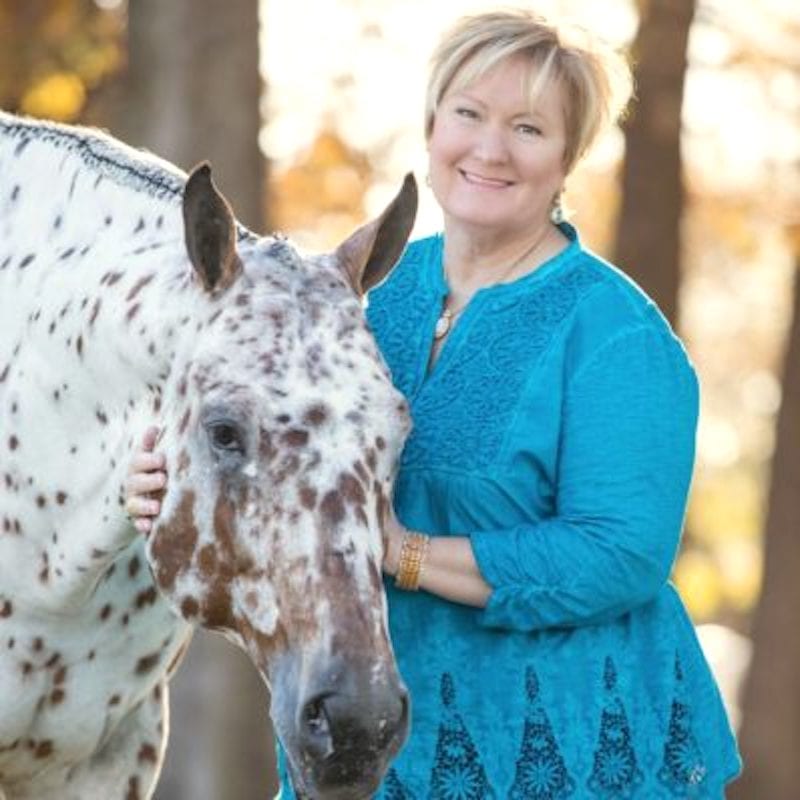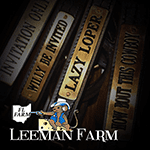Sometimes miracles do happen, as with the case of Spot My Blue Boy (Domino) and his incredible recovery from a life-threatening injury. On January 12, 2018, Domino was found three-legged lame in his stall. After the vet took an x-ray, they found out he had shattered his left rear pastern.
“As soon I saw the x-ray, I fell apart. I just knew his life was over,” recalls Domino’s owner, Rebecca Hogan of Chepota Farm. “With sedation and some stabilization, we transported him to the hospital. Dr. Reese Hand, DVM, explained the surgery with no assurance that he could be saved. For a minimum of four weeks, the cast could fail at any time. If so, there was no alternative but to put Domino down.”
Dr. Hand explained to GoHorseShow that Domino had an injury that is commonly catastrophic that usually results in euthanasia. His injury was a comminuted, displaced fracture of the second phalanx, pastern bone, “In horses with fractures, laminitis is one of the major complications we deal with. Because it is so common, it is essential to make the fractured leg as comfortable and weight bearing as soon as possible to preserve the opposite leg which is at risk of laminitis.”
After seeing the radiographs, the amount of trauma and pieces involved in the fracture, and knowing how big Domino was, Dr. Hand knew he had his work cut out for him.
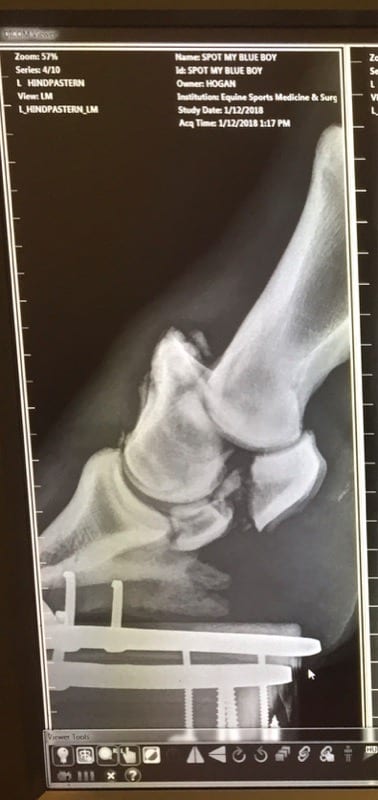 “The only hope for him was an open reduction of the fracture and to reconstruct as many of the pieces back together,” Dr. Hand described to us. “As with many of these fractures, so many small pieces get crushed, and it does not always go back together one hundred percent. We were able to get the majority of the fracture back together using two plates and multiple screws.”
“The only hope for him was an open reduction of the fracture and to reconstruct as many of the pieces back together,” Dr. Hand described to us. “As with many of these fractures, so many small pieces get crushed, and it does not always go back together one hundred percent. We were able to get the majority of the fracture back together using two plates and multiple screws.”
Due to Domino’s size and the reconstruction difficulties, they had to support the fracture more than just what implants could do. According to Dr. Hand, these cases are always placed in a half limb fiberglass cast to help the limb. This cast allows the transfer of approximately sixty percent of his weight off the fracture and onto the cast.
“In most cases this is acceptable, but, in Domino’s case, we needed more,” Dr. Hand states. “I used a cast called a transfixation cast to support the fracture. In this cast, we placed large 1/4 inch pins in the cannon bone above the fetlock and incorporated the pins into the cast. In doing this, greater than eighty percent of his weight is removed from the fracture and absorbed via the pins and cast. So, we were able to make him completely weight bearing and sound shortly after the procedure which helps protect his other leg from laminitis.”
Dr. Hand said that the cast, along with his strong body frame and will to survive, allowed Domino to dodge the number one complication leading to euthanasia for patients with fractures.
“I have no doubt, Domino was as important as anything we did,” Dr. Hand revealed. “He was smart. He laid down, rested his legs and took care of himself. This is something you can’t just ask them to do and it’s the difference between survival and euthanasia.”
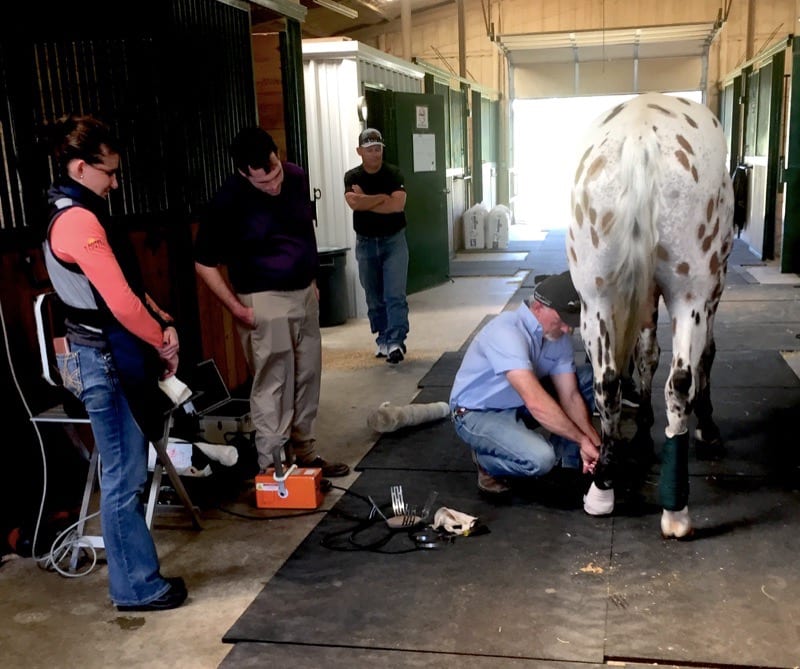 Domino’s owner agrees with Dr. Hand. “He’s Domino,” says Rebecca, who was quick to answer why her stallion has recovered so well. “That has become the joking answer to every inquiry about his recovery since it has been exceptional in its lack of complications and speed. He figured out how to lie down and get back up within a day or so of the surgery. He got off his legs when he hurt and stood otherwise. His attitude was always happy and bright. He was never quarrelsome or difficult to treat. He never lost his appetite or weight. All that had to enhance his recovery.”
Domino’s owner agrees with Dr. Hand. “He’s Domino,” says Rebecca, who was quick to answer why her stallion has recovered so well. “That has become the joking answer to every inquiry about his recovery since it has been exceptional in its lack of complications and speed. He figured out how to lie down and get back up within a day or so of the surgery. He got off his legs when he hurt and stood otherwise. His attitude was always happy and bright. He was never quarrelsome or difficult to treat. He never lost his appetite or weight. All that had to enhance his recovery.”
Finally, on March 26, 2018, Dr. Hand told Rebecca that he was going to survive. “With tears, I released a breath I’d been holding for ten and a half weeks,” Hogan remembers. “I don’t know what the future holds for him, but if all he does is stand in the pasture and munch grass, that is okay with me.”
 Hogan told us that the biggest challenge for her was the uncertainty of the success of the cast. “I don’t think anyone is comfortable with uncertainty, and I am no exception.That is the main reason such a small circle of people knew about this. I just could not face the anxiety of telling people with no answers. I hope all his fans understand that. The outpouring of concern for him has been very gratifying since I did go public. Thank you to all of you who have reached out to me.”
Hogan told us that the biggest challenge for her was the uncertainty of the success of the cast. “I don’t think anyone is comfortable with uncertainty, and I am no exception.That is the main reason such a small circle of people knew about this. I just could not face the anxiety of telling people with no answers. I hope all his fans understand that. The outpouring of concern for him has been very gratifying since I did go public. Thank you to all of you who have reached out to me.”
Although Domino is recovering well, this multiple ApHC World and National Champion Sire is not entirely out of the woods. “While the bone continues to heal, he is not where he should move much. He is facing another month or two of stall rest,” Hogan says. “Then, we will visit the subject of rehab. We are expecting some arthritis in his coffin joint because of pieces of bone that could not be reached with the screws. But it should be manageable.”
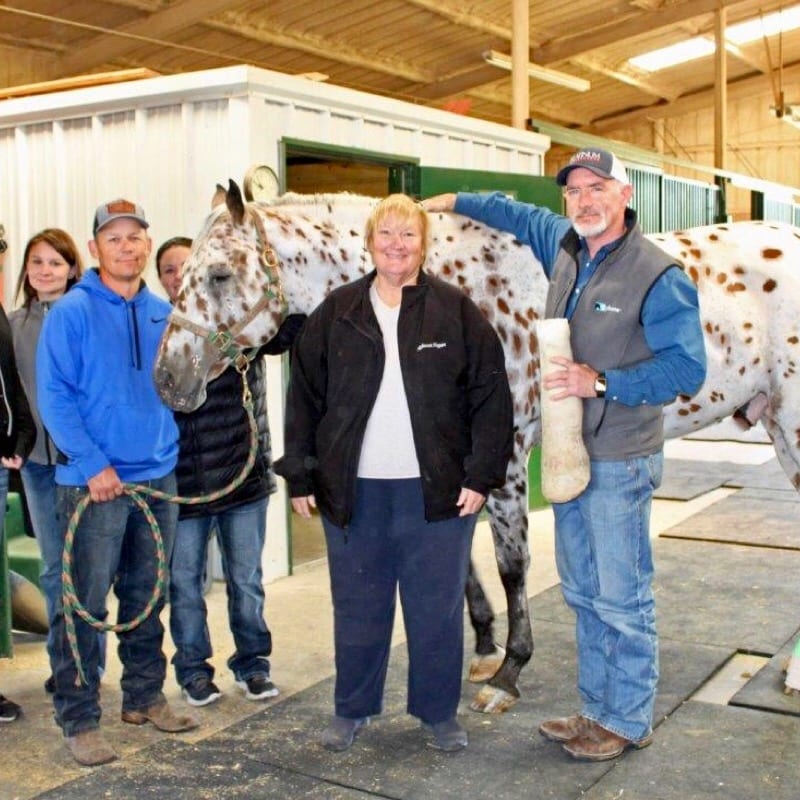 As far as Domino’s future, Dr. Reese Hand is confident. “We are taking it day by day. He is back at home and doing great. We are in the process of weaning him into a bandage and out of his cast. With a little luck, Domino will be able to be turned out in a pasture to live a good life. I also have good feelings we will be able to get him collected to continue his career as a breeding stud.”
As far as Domino’s future, Dr. Reese Hand is confident. “We are taking it day by day. He is back at home and doing great. We are in the process of weaning him into a bandage and out of his cast. With a little luck, Domino will be able to be turned out in a pasture to live a good life. I also have good feelings we will be able to get him collected to continue his career as a breeding stud.”
Hogan adds, “I want to thank the small circle of friends and family who knew about this and supported me through a dreadful experience. Thank you to the always friendly and upbeat staff at ESMS Hospital for dealing with an ever worried and ever-present client. My deepest gratitude goes to two exceptional veterinarians, Drs. Reese Hand and Lisa Stephens.”
GoHorseShow is happy to report that on Friday, April 20th, 2018, Domino’s cast was removed. (pictured left)


